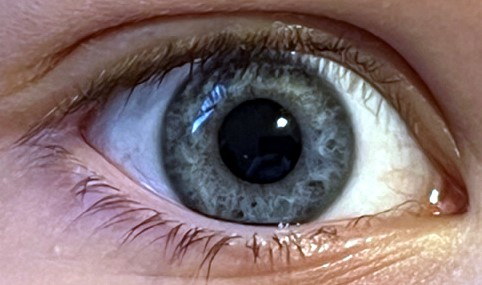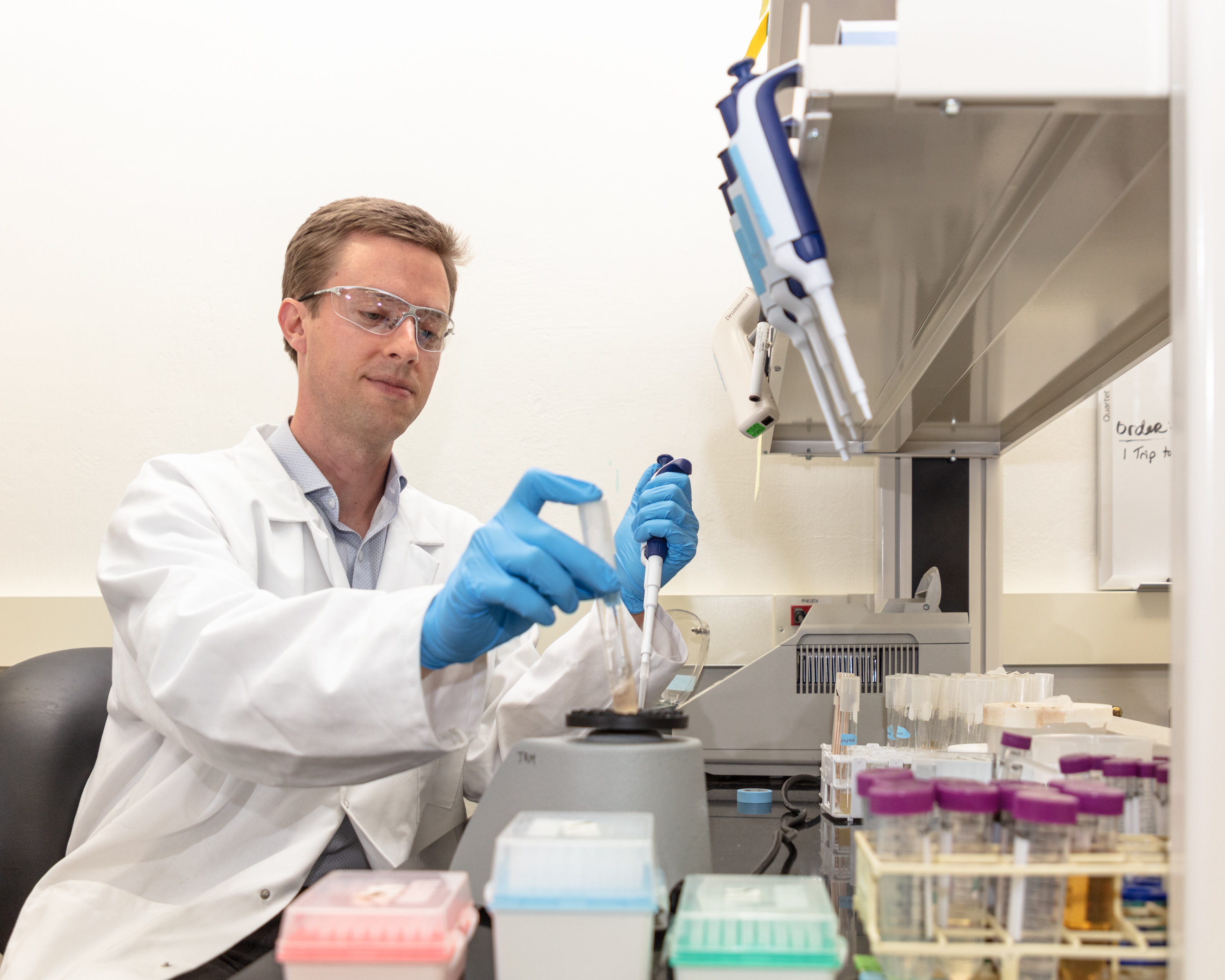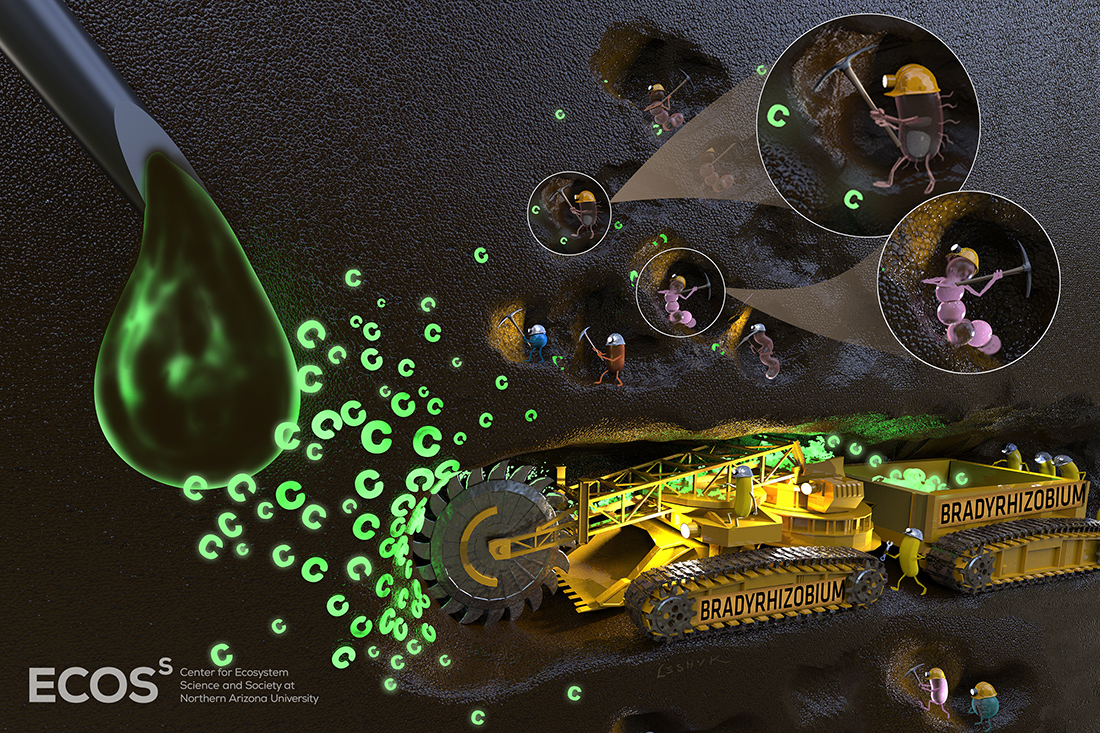UC San Diego scientists debut Greengenes2, a massive reference database that could be used to reconcile years of microbiome studies.
Tag: Bacteria
Host Genetics Play a Significant Role in the Composition of Switchgrass Root Microbiomes
A new study investigated the role of the genes in individual switchgrass plants in determining the composition of the bacterial communities associated with the plants’ roots.
Differences in alcohol metabolism play a role in the severity of alcohol hangovers
Hangovers are common among people who drink alcohol. Previous research showing that a hangover’s combination of both mental and physical misery can occur after a single episode of alcohol consumption also revealed that a rapid breakdown of alcohol into acetaldehyde is associated with less severe hangovers. Findings from an investigation of the metabolic influence of oral microbiota on hangover severity will be shared at the 46th annual scientific meeting of the Research Society on Alcohol (RSA) in Bellevue, Washington.

Brain-Belly Connection: Gut Health May Influence Likelihood of Developing Alzheimer’s
UNLV study pinpoints 10 bacterial groups associated with Alzheimer’s disease, provides new insights into the relationship between gut makeup and dementia.

A Simple Antibacterial Treatment Solves a Severe Skin Problem Caused by Radiation Therapy
Acute radiation dermatitis (ARD)—characterized by red, sore, itchy or peeling skin—affects up to 95% of people undergoing radiation treatment for cancer. Severe cases can cause significant swelling and painful skin ulcers that can severely impair quality of life, yet little is known about why this condition occurs and no standardized treatments for preventing severe ARD have been widely adapted.
Deep Learning-Drives Insights into Protein-Protein Interactions
Protein-protein interactions are essential for life. Researchers used DeepMind’s AlphaFold 2 to develop a deep learning approach for predicting and modeling multi-protein interactions. The AF2Complex approach generates much more accurate structural models than previous methods for modeling a protein complex. As a proof of concept, the researchers used AF2Complex to virtually screen key proteins in E. coli, discovering unexpected protein-protein interactions.

Eye-opening Origin Story: Scientists Trace Key Innovation in Our Camera-like Vision to Bacteria
Scientists have traced the origin of a unique protein key to vertebrate’s camera-like vision back 500 million years. Their analysis of more than 900 genomes across the tree of life revealed that the protein came through horizontal gene transfer from foreign bacterial genes.
UNLV Study Sheds Light on Ancient Microbial Dark Matter
Omnitrophota are nano-sized bacteria first discovered 25 years ago. Though common in many environments around the world, until now they’ve been poorly understood. An international research team produced the first large-scale analysis of Omnitrophota genomes, uncovering new details about their biology and behavior. The team’s findings are reported in the March 16 issue of the journal Nature Microbiology.
Designing More Useful Bacteria
In a step forward for genetic engineering and synthetic biology, researchers have modified a strain of Escherichia coli bacteria to be immune to natural viral infections while also minimizing the potential for the bacteria or their modified genes to escape into the wild.
Chatterboxes: FSU researcher develops new model that shows how bacteria communicate
In new research published by Biophysical Reports, researchers from Florida State University and Cleveland State University lay out a mathematical model that explains how bacteria communicate within a larger ecosystem. By understanding how this process works, researchers can predict what actions might elicit certain environmental responses from a bacterial community.
‘Lights out’ for antibiotic-resistant superbugs
It’s ‘lights out’ for antibiotic-resistant superbugs as next-generation light-activated nanotech proves it can eradicate some of the most notorious and potentially deadly bacteria in the world.
Beyond the average cell
Models based on an average cell are useful, but they may not accurately describe how individual cells really work. New possibilities opened up with the advent of single-cell live imaging technologies. Now it is possible to peer into the lives of individual cells. In a new paper in PLOS Genetics, a team of biologists and physicists from Washington University in St. Louis and Purdue University used actual single-cell data to create an updated framework for understanding the relationship between cell growth, DNA replication and division in a bacterial system.
New Research on Antibiotic Resistant Bacteria May Be A Step Toward New Treatments for Infections
Antibiotic resistant bacteria pose of the greatest threats to global public health. New research has the potential to reduce the amount of antibiotics used in the clinic and may pave the way for the discovery of new antibiotics that change growth rate and energy levels in bacteria.
Capsule-sized ingestible biobatteries could allow new view of digestive system
A new biobattery being developed at Binghamton University, State University of New York could power ingestible cameras in the small intestine.
Life and death of an “altruistic” bacterium
A new study led by Yves Brun shows how some bacteria living in a biofilm sacrifice themselves to ensure the survival of the community.
Microbial miners could help humans colonize the moon and Mars
The biochemical process by which cyanobacteria acquire nutrients from rocks in Chile’s Atacama Desert has inspired engineers at the University of California, Irvine to think of new ways microbes might help humans build colonies on the moon and Mars.
A disinfectant spray that deploys “billions of tiny soldiers”
Researchers have created a powerful new weapon against bacterial contamination and infection by developing a way to spray bacteriophages – harmless viruses that eat bacteria – onto food and other materials to rid them of harmful pathogens.
A new method for studying ribosome function
Scientists report a method for stable attachment of peptides to tRNAs, which has allowed them to gain new fundamental insights into ribosome function by determining the atomic-level structures of ribosomes and the shapes that peptides take inside the ribosome.
Study reveals how naturally-occurring compound kills major drug-resistant bacteria
Researchers say hydroquinine could be an effective weapon against a germ that can cause serious infections in humans, mostly hospital patients.
Research takes on a massive problem: Chronic infection linked to medical devices
Infections related to implanted medical devices are shockingly common and a research team including faculty at Binghamton University, State University of New York is working to address the problem.
The Thinking Undead: How Dormant Bacteria Calculate Their Return to Life
Facing extreme conditions such as starvation and stress, some bacterial cells enter a dormant state in which life processes stop. Biologists have discovered how they assess environmental conditions for a return to life, carrying implications for evaluating life on Earth as well as other planets.
Dietary supplementation may improve antibiotic-induced GVHD following stem cell transplants
Researchers at The University of Texas MD Anderson Cancer Center have identified a specific gut bacterium involved in the progression of graft-versus-host disease (GVHD) after antibiotic treatment of allogeneic hematopoietic stem cell transplantation (allo-HSCT) and discovered that nutritional supplementation can prevent antibiotic-induced GVHD in preclinical models, according to a study published today in Cell.
Chula Launches a Bioproduct “Microbes to Clean Up Oil Spill in the Ocean”
Chula Faculty of Science has developed bioproducts to clean up oil spills in the ocean from their research on oil-eating microbes while getting ready to expand to industrial-scale production for ecological sustainability.
Scientists Unveil New System for Naming Majority of the World’s Microorganisms
In an article published Sept. 19 in the journal Nature Microbiology, a team of scientists present a new system, the SeqCode, and a corresponding registration portal that could help microbiologists effectively categorize and communicate about the massive number of identified yet uncultivated single-celled microorganisms known as prokaryotes.
Scientists discover compound found in trees has potential to kill drug-resistant bacteria
University researchers have found a naturally occurring compound, known as hydroquinine, has bacterial killing activity against several microorganisms.
NSF-funded engineering research to combat medical device infections
For her most recent project, “Mechanical Mechanisms of Biofilm Survival on Implant Surfaces,” Dr. Martha Grady, an associate professor in the Department of Mechanical and Aerospace Engineering at the University of Kentucky, is the recipient of the National Science Foundation’s (NSF) prestigious Faculty Early Career Development (CAREER) Award.
Charlotte researchers part of NSF-supported center investigating ‘healthier’ buildings
Could the design of a hospital or a school affect the germs that can spread within it? UNC Charlotte bioinformatics professor Anthony Fodor is part of a team seeking to find out. He is among the group of researchers undertaking an effort to better understand and improve the microbial communities of where people live, work and play.

It’s Only Natural: Separation And Purification Of Rare-Earth Elements By Microorganisms
Using naturally occurring and engineered proteins and bacteria, Lawrence Livermore National Laboratory (LLNL) scientists and collaborators will separate and purify rare-earth elements so they can be used in the defense sector.
With Roommates, It’s All About Chemistry, Molecularly Speaking
UC San Diego researchers describe how the microbiomes of people and the homes they live in interact and change each other.
Giant Bacteria Found in Guadeloupe Mangroves Challenge Traditional Concepts
In Science, researchers describe a “’macro’ microbe” – a giant filamentous bacterium composed of a single cell discovered in the mangroves of Guadeloupe. Using various microscopy techniques, the team also observed novel, membrane-bound compartments that contain DNA clusters dubbed “pepins.”

Low levels of high-risk salmonella evade traditional methods of detection
Poultry is responsible for more than one out of every five cases of salmonella infection in the U.S. But traditional methods of testing the chicken you grab off the grocery shelf may not be enough to detect all strains of the bacteria, according to new research from the University of Georgia.
Mystery mechanism in small peptide shows big promise for fighting antibiotic-resistant bacteria
Using neutrons, researchers at Oak Ridge National Laboratory pieced together the molecular mechanics behind a peptide’s ability to deal significant damage to bacterial cells. Their findings could inform new therapeutic strategies for treating bacterial infections where antibiotics have fallen short.
Combating Antibiotic Resistance
As bacterial infections impervious to drugs rise, so does the need to develop better antibiotics
Hand washing and sanitizing not enough: close that toilet lid after flushing!
Leaving toilet lids open after flushing can disperse contaminated droplets beyond a metre and remain in the air for 30 minutes. This is one of the findings revealed in a global review of the risks of bacterial and viral transmission in public bathrooms, undertaken by the ANU and University of South Australia.
New bacteria ID will help apple juice producers avoid spoilage
Apple juice lovers won’t be left with a bad taste, thanks to a new Cornell University study that identifies three new bacteria species, one of which fouls up the flavor.
What if just one airborne particle was enough to infect you?
For some diseases, people exposed to just a single airborne particle containing infectious virus, bacteria or fungi can be infected. When this happens, understanding and predicting airborne disease spread can be a whole lot easier. That’s the result of a new study by a Lawrence Livermore National Laboratory (LLNL) scientist who developed a new theory of airborne infectious disease spread.
Bacteria could learn to predict the future
Using computer simulations and a simple theoretical model, a new paper shows how bacteria could adapt to a fluctuating environment by learning its statistical regularities — for example, which nutrients tend to be correlated — and do so faster than evolutionary trial-and-error would normally allow.
Study: Dental implant surfaces play major role in tissue attachment, warding off unwanted bacteria
The surface of implants, as well as other medical devices, plays a significant role in the adsorption of oral proteins and the colonization by unwanted microorganisms (a process known as biofouling), according to a new study led by the University at Buffalo and the University of Regensburg.
Geographic differences in gut microbiota boost immunity
Gut reaction: Cornell researchers “humanized” mice with microbiota from three global populations and found that microbial differences alone can impact immune responses.
Cell-analysis technique could combat tuberculosis
Researchers at Cornell have developed a way to analyze how individual immune cells react to the bacteria that cause tuberculosis. It could pave the way for new vaccine strategies and provide insights into fighting other infectious diseases.
2 in 1 Face Mask Against Dust and Virus – Chula Health Innovation in the New Normal
Chula’s Faculty of Engineering joins hands with PTT to develop a 2 in1 face mask, an innovation that protects against PM2.5 dust particles and COVID-19 virus that can be reused more than 15 times, helps reduce waste, is pollution-free, and will be available for sale soon.

New enzyme breaks down waste for less expensive biofuels, bioproducts
In a step toward increasing the cost-effectiveness of renewable biofuels and bioproducts, scientists at Oak Ridge National Laboratory discovered a microbial enzyme that degrades tough-to-break bonds in lignin, a waste product of biorefineries.

New study shows a few common bacteria account for majority of carbon use in soil
Just a few bacterial taxa found in ecosystems across the planet are responsible for more than half of carbon cycling in soils, according to new findingsfrom researchers at Northern Arizona University.
Trained Viruses Prove More Effective at Fighting Antibiotic Resistance
Research reveals that phage viruses that undergo special evolutionary training increase their capacity to subdue bacteria. The results provide hope for the antibiotic resistance crisis, a rising threat as deadly bacteria continue to evolve to render many modern drugs ineffective.
A ‘jolt’ for ocean carbon sequestration
Global oceans absorb about 25% of the carbon dioxide released into the atmosphere when fossil fuels are burned. Electricity-eating bacteria known as photoferrotrophs could provide a boost to this essential process, according to new research from Washington University in St. Louis.Scientists led by Arpita Bose, assistant professor of biology in Arts & Sciences, found that bacteria found in brackish sediments can “eat” electricity and, in the process, absorb and lock away climate-warming carbon dioxide.
‘Good’ Bacteria Show Promise for Clinical Treatment of Crohn’s Disease, Ulcerative Colitis
A new study published in Nature Communications demonstrates that a consortium of bacteria designed to complement missing or underrepresented functions in the imbalanced microbiome of inflammatory bowel disease (IBD) patients, prevented and treated chronic immune-mediated colitis in humanized mouse models.
Silver Attacks Bacteria, Gets ‘Consumed’
As antibiotic-resistant bacteria become more prevalent, silver has seen steep growth in its use in things like antibacterial coatings. Still, a better understanding can provide clues on how to best apply it. In Chemical Physics Reviews, researchers monitored the interaction of silver nanoparticles with a nearby E. coli culture and found the silver undergoes several dramatic changes. Most notably, the E. coli cells caused substantial transformations in the size and shape of the silver particles.
Microscopic fossils record ancient climate conditions
Researchers report the climate clues that can be found by analyzing magnetic fossil particles, or magnetofossils.
We’ve Got the Dirt on Soil Protists
The diverse collection of microbes known as protists are understudied, but their impact on ecosystems and agriculture could be huge.
Scientists discover five new species of listeria, improving food safety
While examining the prevalence of listeria in agricultural soil throughout the U.S., Cornell University food scientists have stumbled upon five previously unknown and novel relatives of the bacteria.